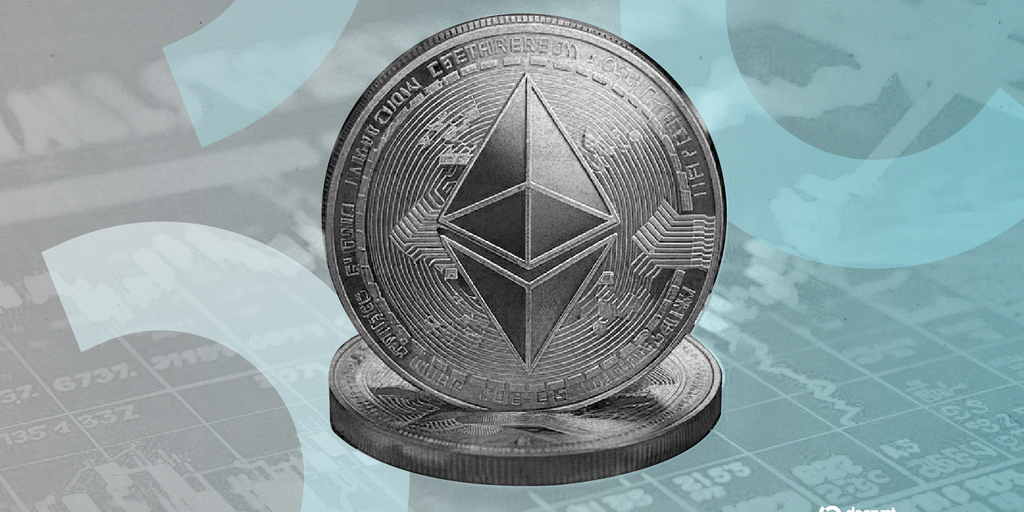Ethereum’s $6,000 Target Reshaping Crypto Outlook
In brief
- Options markets now assign a 30% probability to Ethereum reaching US$6,000 by year-end, up from 7% in early July.
- A U.S.-EU trade deal has calmed global risk sentiment, creating a more favorable backdrop for digital assets.
- Low volatility and funding rates suggest crypto’s latest rally is being driven by spot demand rather than leveraged speculation.
Over the weekend, crypto markets staged a notable rebound, reviving bullish sentiment, particularly around Ethereum.
Ethereum has become the focal point as options activity signals increasing expectations for it to reach US$6,000 by year’s end.
This shift occurs alongside a broader financial adjustment to a US-EU trade agreement, reached on Sunday, impacting roughly a third of global trade.
The trade agreement imposes a 15% tariff on EU goods entering the US and includes commitments from the EU to purchase US energy and defense equipment.
This represents a de-escalation of tensions that could have led to President Trump imposing 30% tariffs on European imports. Such clarity on trade relations typically contributes to a stable environment, allowing investors to embrace riskier assets including digital assets.
Bitcoin climbed 4.45% since Friday, from US$115,000 to US$119,812. Ethereum gained impressively 8.8%, rising from US$3,570 to US$3,900 in the same period.
Don’t let that [dip] distract from what’s been a monster month.” – Nick Forster, Founder, Derive.
Forster believes market sentiment is shifting towards Ethereum.
Options data reflects this commitment, with “the probability of US$6,000 by December 25 more than quadrupling, from just under 7% at the start of July to over 30%.” He termed this “a massive re-pricing of tail risk.”
Analyst Charles Edwards of Capriole Fund shares a bullish long-term view, expecting a new all-time high for Ethereum within 6 to 12 months.
Looking ahead
Bitcoin has held near record highs despite the absence of usual signs of market froth. Implied volatility and funding rates, common indicators of speculative excess, remain low.
Analysts suggest this stability reflects structural changes since the advent of US spot Bitcoin ETFs.
Forster notes this, saying, “Mike Novogratz’s US$150,000 prediction” is no longer far-fetched, as “options markets now imply a 52% chance of Bitcoin hitting that price by year-end.”
Looking at December’s implied volatility, Bitcoin shows a muted profile (30%), while Ethereum’s is higher (60%). Forster anticipates a “smoother climb” for Bitcoin and a potentially “wilder ride” for Ethereum.
Pauline Shangett, CSO of ChangeNOW, reported that new pathways like ETFs “have infused steady liquidity,” keeping implied volatility surprisingly low even during Bitcoin’s ascent.
Shangett suggests established industry patterns are being “rewritten.” The recent spike in Ethereum volatility contrasts with a declining probability of Solana surpassing US$300 by Dec. 25.
Shangett observes that any “alt season” will be more “subdued and selective,” favoring established assets.
While the long-term outlook for crypto, especially Ethereum, remains attractive, attention must turn to an event-packed week.
Wednesday brings the Federal Reserve and Bank of Japan interest rate decisions. Forecasts anticipate US nonfarm payrolls data on Friday will show 110,000 new jobs in July.
Forster highlights monitoring President Trump’s comments on Fed Chair Jerome Powell as crucial. He suggested removing the current Fed chief could lead to “lower interest rate regime,” potentially triggering a buying frenzy first in major assets and then “eventually, alts.”
The prospect of a more lenient monetary policy under new Fed leadership could amplify the current momentum in digital assets, dovetailing with the options market’s growing confidence in significant year-end rallies for both Bitcoin and Ethereum.












